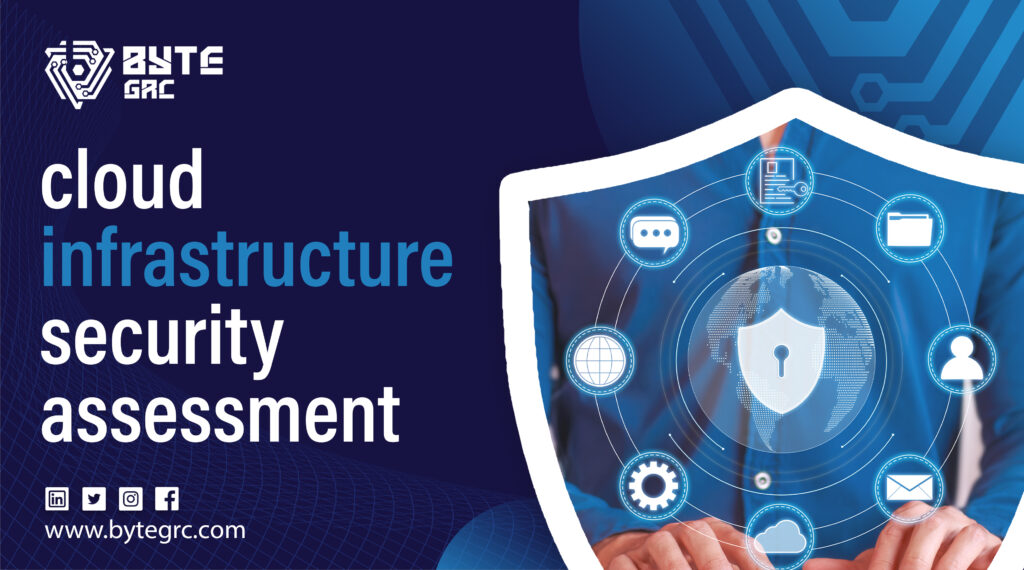
Table of Contents
How to Conduct a Full Cloud Infrastructure Security Assessment
In today’s fast-moving digital world, more companies are switching to cloud computing to store and manage their data. While this shift brings many benefits like cost savings, flexibility, and easy access, it also brings new security challenges. Cybercriminals are always looking for weak spots in cloud infrastructure, and if you’re not careful, they’ll find a way in.
This is why a cloud security assessment is no longer optional—it’s necessary. These assessments help businesses spot risks, meet compliance rules, and fix issues before something goes wrong. They play a huge part in crime prevention, information protection, and regulatory compliance.
The goal of a cloud security assessment is to find and fix weaknesses in your cloud setup. It looks at risks, possible data breaches, and if your systems follow security policies. Whether you’re part of an IT team, a security professional, or a compliance officer, knowing how to perform a full cloud infrastructure security assessment is key to keeping your organization safe.
What is Cloud Infrastructure Security?
Cloud security is all about keeping cloud-based systems safe. It covers protecting data, applications, and services in the cloud environment from attacks or leaks.
Unlike on-premises security, where businesses control everything on their own hardware, cloud security is shared. In the cloud, providers like AWS, Azure, and Google Cloud handle part of the security responsibilities, but customers are still responsible for things like access controls, data protection, and configuration. This is known as the shared responsibility model.
Cloud security covers areas such as data privacy, network security, identity management, and threat detection—all important parts of information technology management and systems engineering.
Why is a Cloud Security Assessment Necessary?
There are several reasons why you need to assess your cloud infrastructure regularly:
- Cybercrime is growing. Attackers are getting smarter, using advanced tools to find weaknesses in cloud systems.
- You must meet compliance standards like GDPR, HIPAA, ISO 27001, and SOC 2. These standards demand regular security evaluations.
- The shared responsibility model means that while cloud providers protect their part, you’re still responsible for many security layers.
Skipping assessments can lead to data breaches, lost customer trust, regulatory fines, and business interruptions. It’s not just a tech task—it’s a key part of business strategy and information governance.
Common Cloud Security Risks
Misconfigurations
A common mistake in cloud computing is setting things up the wrong way. Misconfigured storage buckets, firewall rules, or user permissions can open the door to attackers. Simple errors like keeping open ports or forgetting to enable encryption can lead to major vulnerabilities.
Inadequate Access Controls
If your Identity and Access Management (IAM) settings are too loose, people may have access to things they shouldn’t. This increases the attack surface and can result in data loss or unauthorized access.
Data Breaches and Insider Treats
Not all threats come from the outside. Employees with too much access, or those tricked by phishing scams, can cause data breaches. That’s why multi-factor authentication and proper training are vital.
Vulnerabilities in Third-Party Integrations
Many cloud apps connect with third-party tools (like Salesforce). If these tools have poor security, they can be used as a backdoor to your systems. It’s important to test these tools during your assessment.
Preparing for a Cloud Security Assessment
Defining Assessment Objectives
Before starting, you need to know what you’re looking for. Key goals include:
- Finding what assets (data, apps, services) need protection.
- Meeting regulatory requirements.
- Understanding the business impact of different risks.
This helps you focus your resources and avoid missing important areas.
Gathering Necessary Tools and Resources
Use the right mix of tools:
- Cloud-native tools: AWS Inspector, Azure Security Center, GCP Security Command Center.
- Third-party tools: Qualys, Nessus, Prisma Cloud.
- Penetration testing and vulnerability scanners.
These tools help uncover weaknesses and improve visibility across your environment.
Assembling the Right Team
A solid assessment needs people with different skills:
- Cloud architects to understand infrastructure
- Security analysts to find and study threats
- Compliance officers to align with rules
You can use internal staff or hire external experts depending on your needs and budget.
Conducting the Cloud Security Assessment
Follow these steps to conduct the cloud security assessment:
Step 1: Inventory and Asset Discovery
Find out what you’re working with. List all your virtual machines, databases, serverless functions, and anything else in your cloud environment. Look out for shadow IT—tools or apps used without official approval.
Step 2: Identity and Access Mangement (IAM) Review
Check who has access to what. Look for:
- Overly broad permissions
- Inactive accounts
- Lack of multi-factor authentication
IAM is one of the most important areas in computer security.

Step 3: Network Security Assessment
Look at your network setup:
- Review firewalls, security groups, and network rules
- Find open ports or publicly accessible services
- Review VPNs and private networks
This helps keep your network safe from cyberspace attacks.
Step 4: Data Security and Encryption Review
Make sure your data is safe:
- Use encryption in transit and at rest.
- Avoid making databases or files public.
- Have strong backup and recovery plans.
This step supports data protection, privacy, and information management.
Step 5: Vulnerability and Patch Management
Scan your systems for unpatched software or bugs. Use tools for:
- Automated vulnerability scans
- Finding zero-day exploits
- Tracking updates and patches
Patching is crucial in risk reduction and safety.
Step 6: Logging and Monitoring Audit
Look at logs from services like CloudTrail, Azure Monitor, or GCP Logs. Check:
- Are you logging the right events?
- Is your SIEM detecting threats in real-time?
- Are alerts reaching the right people?
This step supports incident response, audit readiness, and public safety.
Step 7: Compliance and Policy Review
Check if you’re following the rules:
- Compare your system to standards like NIST, CIS, and ISO 27001
- Review your own internal policies
- Create a plan to fix gaps
Compliance also shows accountability and builds trust with clients.
Analyzing and Reporting Findings
Not all issues are equal. Use methods like CVSS scoring or impact vs. likelihood analysis to sort risks. Focus on fixing major issues first, but don’t ignore the rest.
Creating an Actionable Security Report
Your report should include:
- A short summary for leaders
- A technical breakdown for the IT team
- A remediation plan with clear action steps
This report is useful for both technical teams and business leaders.
Presenting Findings to Stakeholders
Not everyone understands tech talk. Explain risks in a way non-technical teams can understand. Show how fixes will boost safety, reduce costs, and protect the company’s future.
Best Practices for a Cloud Security Assessment
Here are the best practices for a cloud security assessment:
Implementing Security Fixes
Don’t just find problems—fix them:
- Use Infrastructure as Code (IaC) to automate updates
- Patch vulnerabilities
- Tighten access controls
Establishing Continuous Monitoring
Security isn’t a one-time task:
- Set up alerts for unusual activity
- Run regular automated scans
- Audit systems often
This helps maintain strong security posture and supports continuous improvement.
Training and Awareness
Humans are often the weakest link. Train employees on:
- Cybercrime prevention
- Spotting phishing emails
- Following secure communication methods
Good training leads to better human communication and safer systems.
Conclusion
A cloud infrastructure security assessment is a powerful tool for finding and fixing weaknesses in your cloud setup. It helps protect against cyber threats, supports compliance, and keeps your data safe in today’s fast-changing digital world.
By following these steps—preparing the right tools and people, running deep checks on access, network, and data, and fixing the gaps—you can build a stronger and more secure cloud environment.
For businesses looking for expert support, Byte GRC offers full-service assessments and ongoing monitoring solutions to help you stay one step ahead in the world of cloud computing security.
FAQs
1: How often should I conduct a cloud security assessment?
At least once a year, or whenever you make major changes to your cloud setup.
2: What’s the difference between internal and external assessments?
Internal teams understand your setup better, while external experts bring a fresh eye and broader experience.
3: Do cloud providers handle all my security needs?
No. Under the shared responsibility model, cloud providers secure the platform, but you must secure your own apps, data, and configurations.
4: Is cloud security only for tech teams?
No. It affects business operations, compliance, user experience, and even customer success.
5: What is the most common cloud security risk?
Misconfigurations—like open storage or weak access controls—are often the top cause of data breaches.

